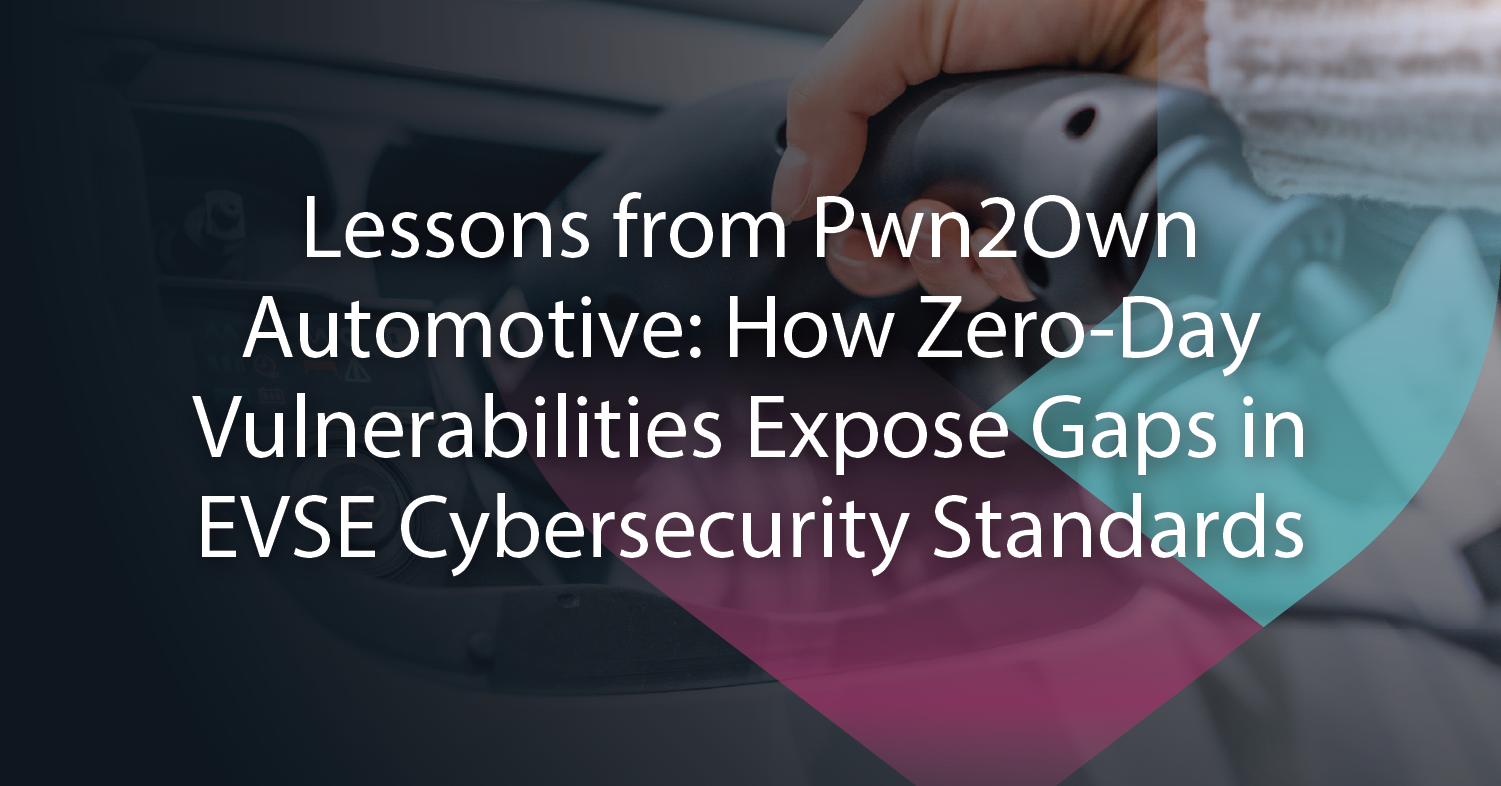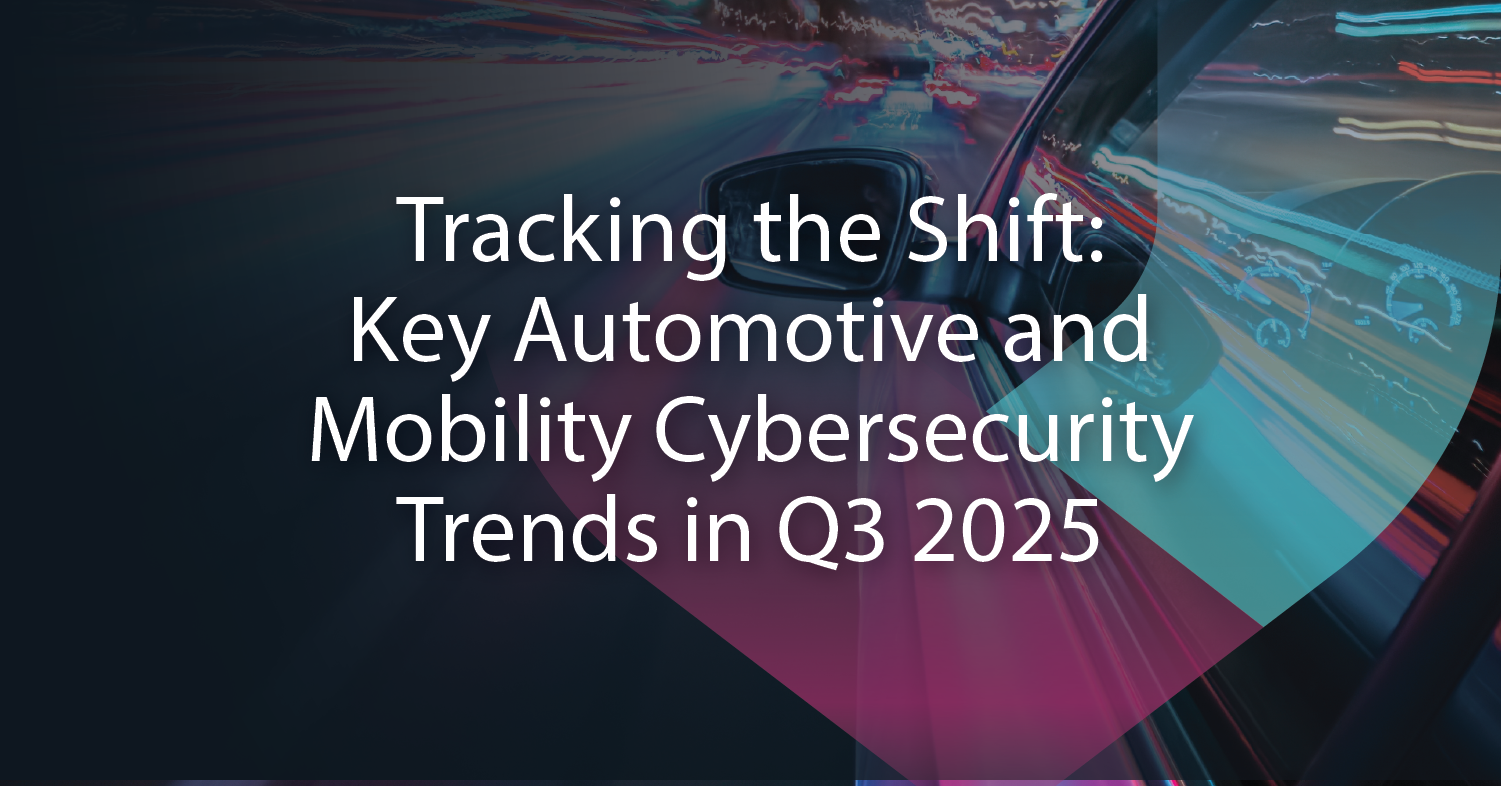
Understanding the Vulnerabilities in EV Charging Communication: Security Insights and Broader Implications
December 4, 2025We examine the electric vehicle (EV) charging communication vulnerabilities revealed at the recent DEF CON 33, highlighting their mitigations and broader industry impacts.
 VicOne
VicOne
From Pwn2Own Automotive: How Zero-Day Vulnerabilities Expose Gaps in EVSE Cybersecurity Standards
November 28, 2025We examine the vulnerabilities discovered in an EV charger during Pwn2Own Automotive to reveal where EVSE cybersecurity standards fall short and why stronger, unified measures are critical for securing the charging infrastructure.
 VicOne
VicOne
How the Euro 7 Emissions Regulation Redefines Compliance for the Automotive Industry
November 20, 2025Euro 7 links emissions integrity to cybersecurity. In this blog, we show how a differentiated, tiered TARA provides a practical path to compliance with Euro 7’s anti-tampering mandates through minimal updates to existing UN R155 frameworks.
 VicOne
VicOneNot If, But When: Cybersecurity Risks in EVSE Infrastructure
November 14, 2025VicOne and the American Center for Mobility (ACM) examine the evolving threat landscape of electric vehicle supply equipment (EVSE) and outline strategies to secure the grid edge.
 CyberThreat Research Lab
CyberThreat Research Lab
Understanding RAMN: How Open-Source Platforms Shape Automotive Embedded Research
November 6, 2025This blog explores how RAMN, especially when paired with the CARLA simulator, enables secure, hands-on experimentation and simulation in automotive embedded systems and cybersecurity research.
 VicOne
VicOne
VicOne Situational Awareness Report: Cybersecurity in the Automotive, Transportation, and Logistics Sectors in Q3 2025
October 31, 2025VicOne shares key insights from its Q3 2025 Situational Awareness Report on cybersecurity in the automotive, transportation, and logistics sectors.
 CyberThreat Research Lab
CyberThreat Research Lab
What CAN Injection Exposes in Connected Vehicles
October 29, 2025We examine one of the challenges at the SPIRITCYBER Automotive CTF 2025, where a simulated CAN injection attack exposes security gaps in modern connected vehicles.
 VicOne
VicOne
Pwn2Own Automotive 2026 Gears Up: Rules, Targets, and What’s New
October 21, 2025Pwn2Own Automotive returns to Tokyo in January 2026 for its third edition. Discover the rules, targets, and what’s new in the world’s largest automotive-focused ethical hacking contest.
 VicOne
VicOne
SOAFEE Blueprint: Boosting Efficiency and Reducing Cloud Costs Through Adaptive Edge AI Threat Detection
October 15, 2025VicOne’s xCarbon Edge AI, powered by SOAFEE architecture, transforms AI-driven vehicle protection by boosting efficiency, optimizing cloud costs, and lowering hardware dependency.
 VicOne
VicOne
Is ISO 15118 Enough to Secure EV Charging?
October 8, 2025While ISO 15118 promises smarter, more secure electric vehicle (EV) charging, it also introduces new risks. Discover what it takes to secure EV charging in our latest research.
 VicOne
VicOne
When a Cyber Incident Halts an Automaker: A Wake-Up Call for Supply Chain Security
September 26, 2025We examine the Jaguar Land Rover cyber incident, emphasizing how the automotive industry can defend against similar supply chain attacks.
 Ziv Chang
Ziv Chang
Redefining Risk: Why Cybersecurity is Critical in Auto Insurance
September 19, 2025This blog offers key insights from our latest research paper, “Insuring the Future of Mobility”, highlighting why cybersecurity is the essential yet often overlooked element in the evolving automotive insurance industry.
 VicOne
VicOne
